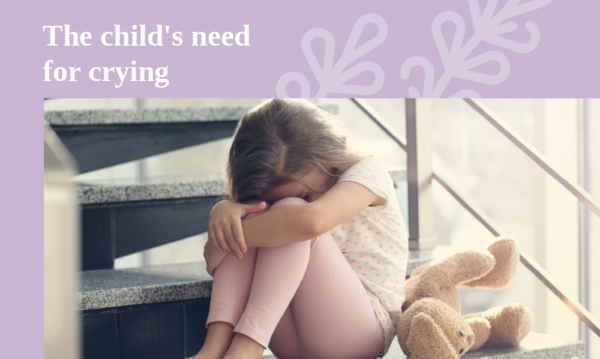Children cry naturally, and we must learn to understand their messages and support the “therapeutic” property of tears. Most of the time, a baby’s crying is a message about a need that must be met. However, there are times when, even for babies, the real need is crying.
It is necessary to respond to a baby’s messages as crying is the primary way of communicating with his caregivers. Once all his needs have been met (food, sleep, diaper, etc.) and there is no physical discomfort or illness, but the baby is still crying, we must respond to his need to cry. She may cry because we do not understand what she needs. We have to respond to his need to cry; he may cry because we don’t know what he needs. We need to remember that when we make assumptions about the source of the baby’s tension, we may be wrong because we often project our perceptions and thoughts. He may cry because he can’t speak or remembered the unknown person who leaned over him a while ago and scared him or feels weak.
When we ignore why the baby cries, we need to understand his choice to feel that way, show him that his choice to cry is right, and that, while he cries, we are by his side, full of love, affection, and understanding. We always try to hold the crying baby. It is good for the baby to connect with us, make us act to his advantage, and give him all our attention.
When a baby is in constant contact with the mother’s body, it is unlikely that he will cry for her basic needs. When we hold our baby and fall asleep like this, he rarely cries to warn caregivers of a simple need.
As children grow older, they gradually use more words instead of signs and cries. However, they still use tears to express physical or mental pain throughout the rest of their lives.
Strong are not people who live without pain, but those who have the power to move forward and learn through pain.
A child’s psychosomatic symptoms (e.g., tics, hand biting, shirt chewing, etc.) or new variants of old symptoms can recur every time he stifles his tears and feelings. What is needed, then, is to prevent the accumulation of repressed emotions.
Separation stress
When circumstances make the mother’s separation from her baby inevitable (hospitalization or other unfortunate events), then, since we cannot avoid it, we stand by and pay attention to the child’s fears and tears. We understand and encourage the child when life circumstances require it, but we do not create them. It is crucial to show understanding to a crying child, but not to make him cry.
When separation is inevitable, our purpose is not to distract the child from his feelings but to understand his experience so that he can cry comfortably and recognize the validity of his experience. Similarly, when we return home after work and face a rabid child, we do not need to stop him from expressing himself or offer him gifts to appease him. We need to show him understanding and affection and express our longing and love, embracing it and listening carefully. The child will recover from the separation stress by crying and/ or expressing his fears and frustration with our understanding, attention, and love. Our steadfast support will give him the message that he is fully capable of experiencing this.
Literature:
Aldort, N., (2010). Raising our children, raising ourselves.


